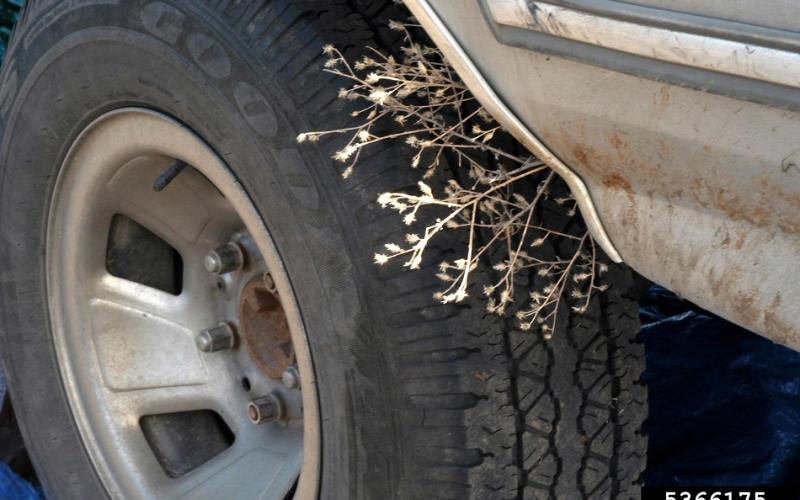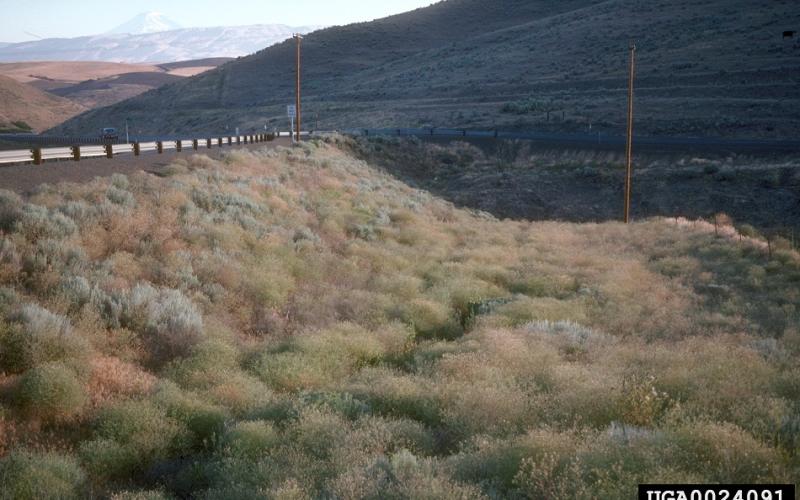Common Name: Diffuse knapweed
Scientific Name:Centaurea diffusa(Lam.)
Legal Status
All above and below ground parts of the plant must be destroyed. Additionally, no transportation, propagation, or sale of this plant is allowed. Failure to comply may result in an enforcement action by the county or local municipality.
Background
Diffuse knapweed is native to Europe. It was accidentally introduced to the U.S. in the 1800s through contaminated seed. An infestation was found in St. Louis County in 2013.
Description
- Diffuse knapweed is a biennial or short-lived perennial in the Sunflower family (Asteraceae). It forms a basal rosette in the first year. At maturity, it is generally shorter than other knapweed species, reaching 1- 3 feet.
- Leaves are covered with short dense hairs, giving the plant a gray tint. Basal leaves, borne on short stalks, are highly divided into long, narrow lobes. Leaves get smaller as they go up the stem, leaves at the top of the plant are small, sessile, and not lobed.
- Flowers are 4 mm in diameter and 9 mm long, usually white, but sometimes pink or purple, urn-shaped, and either solitary or borne in clusters at the end of the branches.
- Bracts at the base of flower heads are leathery and veined, and studded with small, rigid spines with one longer spine at the tip.
- Fruit are very small, dark brown seeds, usually without pappas.
- Plants have taproots.
Habitat
This plant thrives in disturbed habitats such as roadsides, railroad tracks, gravel pits, vacant lots, and heavily grazed pastures. It can tolerate drought, traffic, disturbance, and thin and gravelly soils.
Means of spread and distribution
Diffuse knapweed reproduces primarily by seed, and it is a prolific seed-producer. After flowering, the dried plants may break off at the base of the stem and blow about like a tumbleweed, dispersing seed over long distances.
This knapweed is widespread throughout rangeland in the Western U.S. In Minnesota, there is only one known infestation in St. Louis County.
Impact
Diffuse knapweed overtakes and suppresses native vegetation, reducing species diversity and wildlife habitat. It can also increase soil erosion. This plant is allelopathic, meaning it alters the soil chemistry around it to inhibit the growth of other plants. Diffuse knapweed can also cause crop loss and reduced forage for livestock. The spines on the flower heads can damage the mouths and digestive tracts of livestock.
Prevention and management
- Once established, knapweeds are difficult to control. For all management options, infestations will need to be monitored and treated repeatedly until the seedbanks are depleted.
- Do not plant knapweeds. Limit any further spread of existing plants by cleaning animals, vehicles, and equipment before moving out of an infested area. Use only certified weed-free seed, forage and straw.
- Small infestations can be controlled manually by digging and removing the root crowns or by cultivation. Always bag or incinerate flower heads after removal.
- Large infestations can be controlled with either foliar or cut-stem herbicide applications. For specific herbicide recommendations, contact your University of Minnesota Regional Extension Educator.
- There are several biological control agents approved for use on diffuse knapweed but biological control is not acceptable for eradicate list species.



